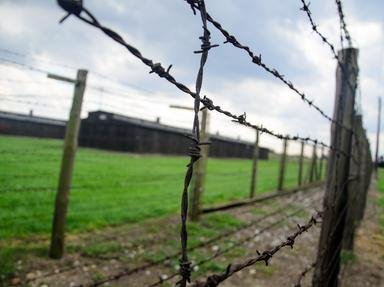Quiz Answer Key and Fun Facts
1. When was Hitler appointed Chancellor of Germany?
2. In the 15 years or so before the Nazis came to power Germany was notoriously antisemitic.
3. In April 1933 most Jews working in the public sector and in the media were dismissed and most Jewish students were expelled from university. Restrictions were placed on them in some other occupations and many Jews found themselves unable to earn a living. Why was emigration difficult in the 1930s (apart from the fact that there were restrictions on taking money out of Germany)?
4. Converts from Judaism to Christianity were unaffected by Nazi anti-Jewish measures.
5. The 'stab-in-the-back legend' was often antisemitic. What did this legend claim?
6. The Nuremberg Laws of September 1935 provided formal, legal definitions of degrees of 'Jewishness' and in effect deprived German Jews of German citizenship, reclassifying them as 'members' of the Reich. What other area did these laws cover?
7. The year 1938 saw a hailstorm of anti-Jewish decrees, banning Jews from most of the occupations still open to them. Their passports were stamped with the letter J in red, and those who did not have obviously Jewish given names were ordered by government decree to add the name 'Israel' or 'Sara'.
On 9-10 November 1938, following the assassination of a junior official at the German Embassy in Paris by a Jew, there followed the 'Night of Broken Glass'. Which of these *best* describes this event?
8. Germany lost many leading authors, scholars and scientists (non-Jewish as well as Jewish) as a result of persecution and emigration. How did the Nazi regime react to the emigration of Albert Einstein?
9. In many areas that the Nazis annexed and conquered they established ghettos, especially in Poland, Lithuania, Latvia and Belarus. However, they felt that ghettos in the heartlands of Germany would be unacceptable. What did the Nazis do about the Jews still resident in Berlin, Cologne and some other major German cities almost immediately after the outbreak of war in 1939?
10. In May 1940 Auschwitz concentration camp was established in an annexed part of Poland, near Krakow. For what category (or categories) of people was it *originally* used?
Source: Author
bloomsby
This quiz was reviewed by FunTrivia editor
Exit10 before going online.
Any errors found in FunTrivia content are routinely corrected through our feedback system.

